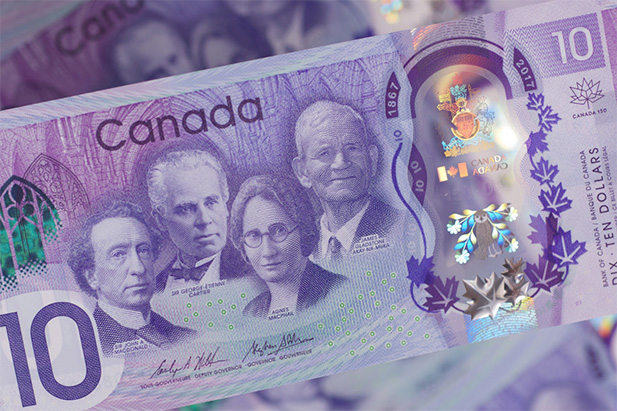University experts weigh in on significance of Canada’s new commemorative $10 bill
May 1, 2017

The Bank of Canada recently announced a new design for the $10 bill to commemorate the country’s 150th birthday. Among the noteworthy Canadians featured on the bill are:
- Agnes Macphail, the first woman elected to Parliament (1921) and one of the first two women elected to Ontario’s provincial legislature (1943).
- James Gladstone, who became Canada’s first senator of Indigenous descent (1958).
It’s one of the few times a Canadian woman, and the first time an Indigenous Canadian, have been featured on the country’s currency.
Agnes Macphail: champion of equality and human rights
According to Dr. Alyson King, Assistant Professor in the University of Ontario Institute of Technology’s (UOIT) Faculty of Social Science and Humanities (FSSH), the recognition of strong women like Agnes Macphail is a positive step toward the to advancement of women’s equality in Canada. Dr. King noted that Macphail has become the symbol of suffrage in Canada, alongside The Famous Five (five Alberta women who in the 1928 case Edwards v. Canada (Attorney General) asked the Supreme Court of Canada to answer the question, “Does the word 'Persons' in Section 24 of the British North America Act, 1867 include female persons?”).
However, Dr. King argues this type of formal recognition needs support through other practical measures that ensure the continuing progress of women’s equality in everyday life.
“The fact that it has taken another 94 years for a significant number of women to be elected into Parliament illustrates how difficult it is for women to be successful in Canadian politics,” says Dr. King. “It is important to recognize these ‘firsts,’ but these recognitions need to be followed up with programming and efforts to fight against discrimination.”
James Gladstone: Indigenous rights advocate
James Gladstone (known as Akay-na-muka in the Blackfoot language) was a member of the Kainai (Blood Tribe) First Nation in southern Alberta. As a senator, he fought for the rights of Indigenous people in Canada, including the right to vote, won in 1960.
Chris Grol, Student Development Specialist at the UOIT-Baagwating Indigenous Student Centre, affirms the importance of Indigenous representation on the bill.
“It’s often difficult for Indigenous people to see themselves in much of society, especially with the reserve systems,” says Grol. “Indigenous people that come into urban centres often tend to blend in, but many do not see themselves as a part of Canada’s culture. Representation on Canadian currency acknowledges Indigenous history, past and present Indigenous leaders, and Indigenous people who contributed to Canada as it is today.”
Indigenous Cultural Advisor Jill Thompson agrees. “We don’t see ourselves on television, in commercials or movies―and when we do see ourselves on the television, it is usually in a negative light,” says Thompson. “It is nice to have this kind of recognition of Indigenous people as important contributors to Canadian society.”
The new $10 bill will be issued into circulation on Thursday, June 1.